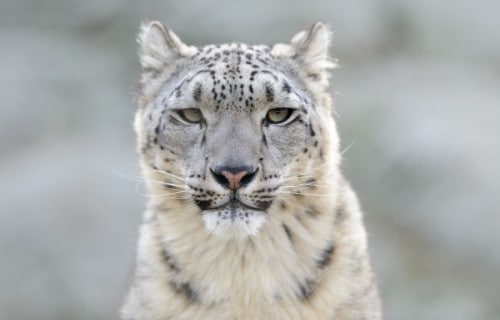
CCL: http://bit.ly/2xLZ0ap
We sincerely hope that you will enjoy this article about 8 Incredible Asian Mammals. To be certain, every part of the world has beautiful creatures within its boundaries, of course. This region of the globe is absolutely no exception to this. Naturally, in fact, these eight represent only the tiniest handful of the wondrous species to discover in the region. But, we hope that reading of these 8 Incredible Asian Mammals will create in you a yearning to discover more.
Visayan Spotted Deer
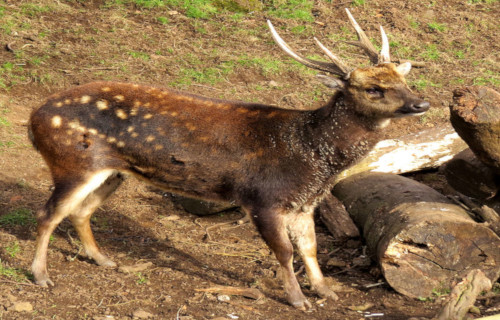
Visayan Spotted Deer Facts
- The first creature to grace this article about 8 Incredible Asian Mammals is the amazing Visayan Spotted Deer.
- The sincerely remarkable creature known commonly by the descriptive name remains somewhat of a mystery to researchers. This primarily holds true due to the startling but true fact that sightings of this astounding animal in the wild rarely occur.
- In the year 2009, researchers found the first evidence of the existence of the animal in the wild in more than 10 years. In addition, it was not until 2012 that the first successful photographing of the gorgeous mammal in its native habitat occurred.
- An estimated 2,500 of the Visayan Spotted Deer live in various locations. Quite unfortunately, these consist of locations such as zoos, around the world. However, its wild population appears to be extremely small, and diminishing.
- Due to its numbers, and the threats it faces, the IUCN lists it as Endangered. Its greatest threat appears to be deforestation. But, hunting by locals threatens it as well. Current estimates place its population at no ore than 300 individuals.
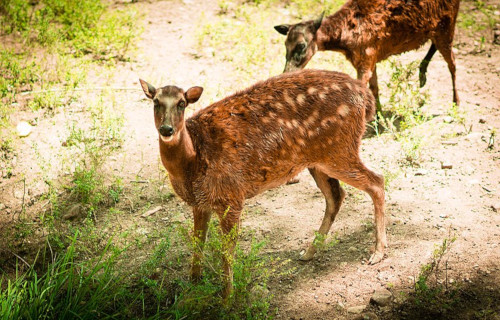
CCL: https://bit.ly/1xMszCg
Visayan Spotted Deer Physical Description
Firstly, the marvelous Visayan Spotted Deer represents a physically small species of its kind, proving that size has no bearing on beauty. Despite that fact, however, the rare creature nevertheless remains the largest of the three types of deer in its region.
Also, this magnificent animal displays only a slight degree of the trait of sexual dimorphism. In its case, the males grow slightly larger than the females. These also develop short, thick antlers. The female, however, does not develop these.
Additionally, an overall average body length of mature adults equals between (49 – 51 in 125 – 130 cm). Meanwhile, shoulder height averages roughly 28 – 31 in (70 – 80 cm). But adult weight varies quite significantly. This runs from 55 – 176 lb (25 – 80 kg).
Finally, the coloring of the Visayan Spotted Deer consists of several patterns. The back and sides tend to be dark brown, while the neck and head appear a lighter shade. Further, the stomach usually presents a creamy-white shade. A pattern of beige spots also dots its sides and back
- Kingdom: Animalia
- Phylum: Chordata
- Class: Mammalia
- Order: Artiodactyla
- Family: Cervidae
- Genus: Rusa
- Species: R. alfredi
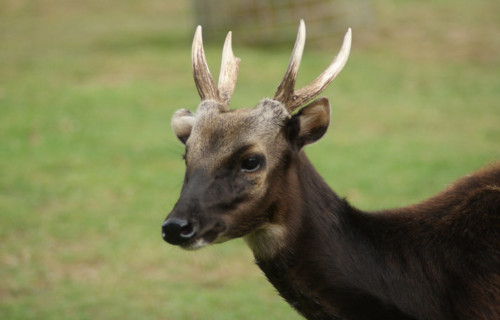
CCL: https://bit.ly/1ryPA80
Visayan Spotted Deer Distribution, Habitat, and Ecology
The wonderful Visayan Spotted Deer, quite sadly, has an extremely limited natural range. While it once existed on other islands, it now lives in the wild only on two islands These consist of the Visayan islands of Negros and Panay, in the Philippines, in Asia.
Yet, even there, it lives only in specific portions of the islands. These include sections of forest, and the local grasslands. Additionally, it once lived from the shore to the heights. But now, it only thrives in the higher altitudes, up to 6,561 ft (2,000 m).
Also, like all other known types of deer, the Visayan Spotted Deer evolved as entirely herbivorous in terms of its nature. Therefore, its diet typically consists of a limited variety of various buds, grasses, and leaves endemic to the local forest.
It also evolved as primarily nocturnal in nature. As a result, it typically emerges at night to feed in small clearings. In addition, the mammal usually travels in small groups. However, males sometime live solitary lives. Otherwise, researchers know little of its life cycle.
Raccoon Dog
Raccoon Dog Facts
- Next among our choices of 8 Incredible Asian Mammals is the surprising species known as the Raccoon Dog.
- Most notably, the remarkable Raccoon Dog forms a remarkable species of canid. It’s also endemic to a moderately restricted range of habitation. However, the unique animal also sometimes goes by several other common names.
- These include the tanuki, the mangut, and the neoguri. However, the animal also has the extremely cumbersome scientific name of Nyctereutes procyonoides. This animal also apparently remains the only known extant species within its genus.
- Despite the name, it has no relationship with the raccoon in any way. But, the name understandably derives from the physical resemblance to the raccoon. Experts also consider it to be a basal species. Sadly, its numbers appear to be declining rapidly.
- In addition to the effects of human expansion, the Raccoon Dog also faces several other threats. One of these come from hunters who seek its fur. The highly unique animal species was also introduced into central and western Europe.
- There, the animal remains considered by many people to be an invasive species. Nevertheless, it also now faces the dual threats posed by persistent habitat loss, and, of course, the ongoing effects of the great danger of climate change.
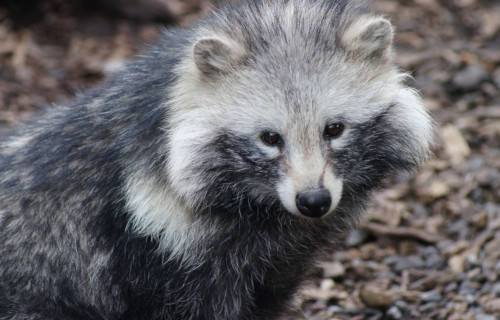
CCL: http://bit.ly/2JszWtI
Raccoon Dog Physical Description
Mature adult individuals of the amazing Raccoon Dog average roughly 28 in (71 cm) in total length. This measurement does include the tail, however. In point of fact, the impressive tail of the mammal typically accounts for about 7 in (18 cm) of this length.
Furthermore, this remarkable mammal displays no noticeable degree of the trait of sexual dimorphism. It does share one particular characteristic with many other species, though. That’s the fact that its weight also varies greatly by season.
In the month of March, the animal only averages around 6.6 lb (3 kg ) in weight. Yet, quite amazingly, by August this average increases to roughly 15.4 lb (7 kg). While the principle itself remains fairly common, this degree of change isn’t.
The torsos of both genders grow long, and the legs stay relatively short. Its coloring varies with each individual, and also with the seasons. The Raccoon Dog typically appears darker in winter, and lighter in summer. Strangely, during the summer, its fur actually becomes thicker.
- Kingdom: Animalia
- Phylum: Chordata
- Class: Mammalia
- Order: Carnivora
- Family: Canidae
- Genus: Nyctereutes
- Species: N. procyonoides
Raccoon Dog Distribution, Habitat, and Ecology
Unfortunately, the Raccoon Dog evolved as native to a limited section of the eastern portion of Asia. But, even within that range, it has very specific habitat requirements. More precisely, it typically inhabits regions of forest, although it has proven to be highly adaptable in recent years.
The animal also has an omnivorous diet. It mainly feeds on a variety of prey. These include amphibians, insects, rodents, fish, birds, and reptiles. Individuals also feed on carrion when it’s present. The plants it feeds on depends on its precise geographical zone of habitation.
The Raccoon Dog also lives as a monogamous animal. Males often fight for the females, yet such battles rarely become fatal. Litters generally number 6-7 pups, but as many as 15-16 do occur. Males typically remain active participants in rearing and providing for the young.
Red Panda
Red Panda Facts
- The third of the species selected to represent these 8 Incredible Asian Mammals is the magnificent Red Panda.
- An important fact should be noted about the marvelous mammal that might surprise many. That’s the nature of its relationship to a certain other species. Although it’s a related species, it does not bear a close relationship to the much better known Giant Panda.
- Also, the animal actually represents the only species in its own family. However, others did exist previously. Quite sadly, these others have now become extinct. Nevertheless, experts do currently recognize two known subspecies of the remarkable mammal.
- Further, the IUCN lists the magnificent creature as Endangered. This highly unfortunate status occurs primarily due to its numbers. In point of fact, its known population now appears to total fewer than 10,000 individuals still in existence.
- Finally, the Red Panda now faces numerous threats to its existence. These certainly include climate change and habitat loss. But, other factors also threaten the creature. These include such factors as hunting and competing with local livestock for food.
Red Panda Physical Description
First of all, the marvelous Red Panda does not possess the sheer size of its better known relative. But what it lacks in size, it makes up for in charm. Further, in fact, the remarkable animal only grows to a size slightly larger than your average household cat.
That holds true due to the surprising fact that it only averages a head and body length measuring about 20 – 25 in 50 – 64 cm). In addition, its bushy tail adds an impressive average of around 11 – 23 in (28 – 59 cm). But this does vary between individuals.
Also worthy of note, this beautiful species displays only a very slight degree of the trait of sexual dimorphism. Therefore, both genders attain an average weight between 6.6 – 13.7 lb (3.0 – 6.2 kg). Yet females do sometimes remain slightly lighter than males.
Furthermore, the fur of the Red Panda tends to grow relatively long, and also quite soft. Also, the color of the upper part of the body generally shows a light reddish-brown. Meanwhile, the lower portions show black, and the face appears whitish.
- Kingdom: Animalia
- Phylum: Chordata
- Class: Mammalia
- Order: Carnivora
- Family: Ailuridae
- Genus: Ailurus
- Species: A. fulgens
Red Panda Distribution, Habitat, and Ecology
It must be noted that, quite regrettably, the incredible Red Panda only inhabits a moderately extensive habitat range. To be more precise, this range of habitation extends from the Himalayas to the southwestern portions of the country of China, in Asia.
Yet even there, the habitat preferences of the small mammal remain quite specific. Although exceptions do occur, these primarily consist of temperate forests. Also, the fascinating species generally inhabits altitudes ranging from 7,200 – 15,700 ft (2,200 – 4,800 m).
Further, the majority of specimens of the magnificent small mammal live a principally solitary life. That holds true due to the fact that adult individuals usually only come together during mating season. In addition, both genders tend to be quite territorial.
Furthermore, the animal also remains technically omnivorous in nature. However, bamboo actually comprises by far the great majority of its diet. Nonetheless, individuals will on occasion consume birds, small mammals, flowers, eggs, and berries.
Finally, the natural predators of the marvelous Red Panda mainly consist of the Snow Leopard and other larger carnivores in its range. Sadly, however, humans also pose a great threat to the animal. That’s because locals often hunt it for its fur.
Snow Leopard

CCL: http://bit.ly/2xLZ0ap
Snow Leopard Facts
- Appearing next among these 8 Incredible Asian Mammals, though only due to random selection, comes the astounding Snow Leopard.
- Because of its majestic beauty, the gorgeous variety of wild feline presently holds a highly unique status. The stunning creature represents the National Heritage Animal in two countries within its territorial range. As a result, it’s afforded a certain measure of protection.
- The mammal also ranks among the most beautiful of the so-called big cats. It’s also the least aggressive towards humans. These felines reportedly can easily driven away from livestock. The animal even readily abandons its kills if approached by humans.
- Sadly, this remarkable wild feline now finds itself in danger of extinction. The IUCN lists the Snow Leopard as Threatened. Additionally, climate change and habitat loss represent the greatest threats to its continued existence as a species.
Snow Leopard Physical Description
Perhaps most notably, the magnificent Snow Leopard differs from related creatures in an unexpected manner. This animal evolved as slightly smaller than other big cats. The body remains stocky in shape, averaging about 50 in (130 cm) in length.
It also achieves a usual weight of about 120 lb (55 kg). That’s significantly less than most big cats. The legs of the feline develop as comparatively short. Furthermore, the feline measures an average length of 24 in (60 cm) at the shoulder.
However, the relatively lush tail develops as quite long, averaging roughly 39 in (100 cm) in length. Furthermore, its evolutionary adaptations include the well-known stocky build, much thicker fur, smaller ears, and wider paws.
The beautiful Snow Leopard also remains capable of leaping as much as 50 ft (15.2 m). Meanwhile, its coloring varies a relatively large degree between individuals. This range generally runs from a smoky gray to a tan color, with the ubiquitous spots.
These patterns provide for excellent camouflage within its endemic habitat. In addition, the eyes of the mammal appear very distinctive, and typically show gray or pale green in color. Occasional individuals are born with a brilliant blue variant.
- Kingdom: Animalia
- Phylum: Chordata
- Class: Mammalia
- Order: Carnivora
- Family: Felidae
- Genus: Panthera
- Species: P. uncia
Snow Leopard Distribution, Habitat, and Ecology
The stunning Snow Leopard evolved as endemic to a specific portion of the globe. More precisely, that consists of Central and Southern Asia. Within that range, it remains restricted to the upper mountain ranges, in Afghanistan, and Pakistan.
The remarkable species commonly inhabits both the alpine and sub-alpine ranges. It also lives at impressive altitudes. These heights average between 9,800 – 14,800 ft (3,000 – 4,500 m). The species of big cat prefers terrain that is rocky or snow-covered.
In addition, the feline has a very distinct time of activity. This active period generally consists of several hours, occurring at or near twilight. The species also evolved as primarily carnivorous and appears to be an excellent hunter.
Further, individuals typically take smaller types of prey, such as rabbits and birds. But, individuals will occasionally take prey several times their own size. This stunning animal also feeds opportunistically, consuming carrion, when necessary.
The Snow Leopard also sets itself apart from others in one more way. It eats a larger percentage of vegetation than any other big cat. The feline leads a primarily solitary life. It usually only groups together to mate, or while a female is rearing her cubs. A typical lifespan is 15-18 years.
Snow Leopard Conservation Efforts
The animal man knows as the Snow Leopard sadly faces the danger of extinction. Exact tallies of its numbers in the wild remain impossible to attain. This lamentable fact holds true given the remoteness of its habitat. Current estimates place its numbers at fewer than 8,700.
Fortunately, though, numerous organizations are now actively working to preserve the fantastic species. In fact, in the year 2013, the governments of 12 of the countries the gorgeous feline inhabits signed the Bishkek Declaration.
Preservation efforts of many kinds remain underway, both large and small in scope, but all are greatly appreciated. The Declaration created numerous protected areas within the range the felines inhabit. To date, a total of 23 of these protected areas exist.
A few of these include Chitral National Park, in Afghanistan, and Tumor Feng Nature Reserve, in China. Yet, more must be done to protect it. Quite sadly, illegal poaching of the Snow Leopard still occurs, as well as a threat from habitat loss.
Indian Giant Squirrel
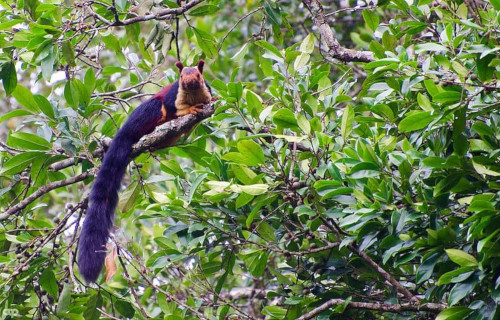
CCL: https://bit.ly/1xMszC
Indian Giant Squirrel Facts
- Appearing in the fifth spot among these 8 Incredible Asian Mammals is the dazzling Indian Giant Squirrel.
- Firstly, the Indian Giant Squirrel obviously represents an extremely large variety of tree squirrel. It also sometimes goes by the alternate common name of the Malabar Giant Squirrel. But, its scientific name remains the difficult to pronounce Ratufa indica.
- Secondly, scientists presently acknowledge four different subspecies of the mammal. Amazingly, all of these exist on the same continent as the primary species. Though not unknown, such close association among species and subspecies remains uncommon.
- It also boasts a status that not many species can make. Within its endemic range, the animal appears to exist in fairly large numbers. Due to this pleasantly surprising fact, the IUCN currently lists the stunning animal as a Species of Least Concern.
- Finally, unlike most related species, this stunning creature is actually quite vocal. This represents yet another manner in which the Indian Giant Squirrel distinguishes itself. It also produces different sounds for such things as warnings, mating, and territorial calls.
Indian Giant Squirrel Physical Description
The Indian Giant Squirrel qualifies as a true giant of its kind. Adults attain an average body length of about 14 in (35.5 cm). But, the incredible tail adds another 24 in (61 cm). Despite its size, it does not attain a great weight. Mature adults typically average about 4.4 lb (2 kg).
Its size alone does not make this impressive species stand out to observers. It generally presents a stunning pattern of natural coloring. This holds true due to the amazing fact that it generally presents a two-toned, and sometimes even a three-toned, color pattern.
The astonishing coloring of the Indian Giant Squirrel does not stop there. Its exact pattern and combinations of colors also varies between individuals. However, these most commonly consist of various shades of tan, buff, rust, brown, and even, on rare occasions, a creamy-beige.
- Kingdom: Animalia
- Phylum: Chordata
- Class: Mammalia
- Order: Rodentia
- Family: Sciuridae
- Genus: Ratufa
- Species: R. indica
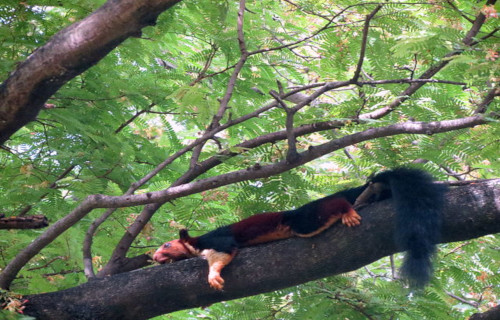
CCL: https://bit.ly/3akMT4C
Indian Giant Squirrel Distribution, Habitat, and Ecology
The almost kaleidoscopic Indian Giant Squirrel inhabits a specific portion of the country of India, in Asia. More specifically, this range consists of the peninsular part of the country, and only extends as far north as Madhya Pradesh.
In addition, the breathtaking animal actually thrives in several different habitat types within that area. Due to this, it appears in evergreen forests, deciduous forests, and mixed forests, as well. This adaptability also sets it apart from related species.
In addition, it also spends the vast majority of its time in the upper canopy of its region. In point of fact, the living kaleidoscope rarely ever descends form this location. Instead, it moves from tree to tree with great leaps, that can be as much as 20 ft (6 m).
Some of the subspecies of the creature evolved as omnivorous in nature. However, the Indian Giant Squirrel itself has a herbivorous diet. It mainly feeds on various nuts, flowers, fruit, and tree bark. In turn, it falls prey to leopards and birds of prey.
Greater Malay Chevrotain
Greater Malay Chevrotain Facts
- Next up in this listing on 8 Incredible Asian Mammals is the extraordinary animal known as the Greater Malay Chevrotain.
- The remarkable Greater Malay Chevrotain represents a small species of ungulate. Sadly, it also remains in danger of extinction. This fact partially occurs due to the fact that the local inhabitants of its endemic region continue to routinely hunt the animal as a food source.
- The effects of continued, and escalating, deforestation of the area it inhabits has reduced habitable land for the creature. The mammal also faces the threat of climate change. However, the IUCN does not list the animal on its Red List of Threatened Species.
- Many researchers believe that this lovely animal would likely be extinct already, were it not for one unusual aspect of its particular physiology. That pertains to the extremely rapid reproductive processes this fascinating animal evolved.
- The Greater Malay Chevrotain achieves sexual maturity at only 4.5 months of age. The fabulous creature also possesses a lifespan of roughly 14 years. The two factors provide it with a significant evolutionary advantage that it employs to its benefit.
Greater Malay Chevrotain Physical Description
Despite its relatively tiny size, the Greater Malay Chevrotain holds some surprises in store for those who research it. That’s especially true of those new to knowledge of it. In fact, it actually constitutes one of the largest members of its genus.
Further, the unique creature possesses a quite tiny average head-and-body length. This measures a total of only about 2.5 ft (75 cm). To this, the relatively short tail of the remarkable mammal adds another 4 in (10 cm) to the overall length.
Furthermore, mature adults of the animal also remain small in other statistics. These attain an average height measuring roughly 14 in (35 cm) at the shoulder. Additionally, the weight of this magnificent species rarely exceeds 18 lb (8 kg).
The head develops as small and triangular in shape, giving it a distinctive appearance. Meanwhile, the legs develop extremely thin, even in relation to the rest of the body. Also, the hind legs of the animal also remain noticeably longer than the front legs.
In color, this creature appears a mixture of gray, brown, and orange on the upper body. The neck, stomach, chin, and chest typically display white. Finally, the males of the Greater Malay Chevrotain also possess a set of elongated canine teeth projecting from the upper jaw.
- Kingdom: Animalia
- Phylum: Chordata
- Class: Mammalia
- Order: Artiodactyla
- Family: Tragulidae
- Genus: Tragulus
- Species: T. napu
Greater Malay Chevrotain Distribution, Habitat, and Ecology
The Greater Malay Chevrotain only exists in widely scattered portions of Asia. These mainly consist of the countries of Borneo, Sumatra, southern Myanmar and Thailand. Yet it also appears in the Malay Peninsula, and also several small islands in the region.
The remarkable animal also has decided preferences for where it lives. It prefers to inhabit either mangrove thickets or regions of tropical rainforest. Yet, it is most commonly found residing near bodies of water. It also evolved as a primarily terrestrial species.
The fascinating mammal lives as a primarily nocturnal creature. It also typically lives a solitary life. To the best of the knowledge of researchers, the lone exception to this appears to be for mating purposes. Further, the males are notoriously territorial.
The unusual ungulate also remains entirely herbivorous in its dietary habits. Individuals primarily feed on a wide variety of small, locally indigenous plants. These include shrubs, grass, buds, leaves, fallen fruits, and aquatic plants.
The magnificent Greater Malay Chevrotain depends heavily upon its reproductive capacities for its survival as a species. In point of fact, the animal breeds throughout the year, and the female spends most of her adult life pregnant.
But this marvel of Nature isn’t done quite yet. That holds true due to the fact that it possesses one more factor of its nature to impress us. That’s because, incredibly, infants become fully active within 30 minutes following their birth.
Saola
Saola Facts
- The seventh animal appearing in this compendium of 8 Incredible Asian Mammals is the rare creature known as the Saola.
- The simple term for this animal does not do this creature justice. In fact, it serves as one of the common names for an astonishing species of moderate-sized mammal. However, this truly remarkable creature also goes by several other common names.
- These several alternate terms include the Vu Quang ox, spindlehorn, and the Vu Quang bovid. But, the fabulous animal also has one other alternate name, that really grabs the attention. That occurs because it’s sometimes referred to as the Asian Unicorn.
- This occurs due to a specific factor of its physical appearance. But, it’s also presently one of the most reclusive animals known to mankind. In addition, this incredible and unique species actually represents a genetic cousin of the cow, antelope, and goat.
- Furthermore, this surprisingly fascinating bovine also holds yet another remarkable status. In point of fact, the completely unique animal remained entirely unknown to the outside world until 1992. Its discovery at that time happened accidentally.
- In early November of 2014, an automated camera spotted a single Saola. That was the first sighting in almost 14 years. The IUCN lists it as Critically Endangered. The greatest threats to its existence consist of habitat loss and climate change.
Saola Physical Description
Firstly, one factor limits man’s knowledge of the animal. Unfortunately, fully reliable information about the Saola understandably remains exceedingly scarce. As a result, scientists obviously know only a few things about it for the moment.
However, based on the few individuals captured, some conclusions can be drawn. For one thing, mature adult specimens appear to average about 35 in (90 cm) at the shoulder. Furthermore, adults also appear to reach 5 ft (1.5 m) in total body length.
In addition, an adult weight for the fascinating mammal remains quite small. This seems to average roughly 220 lb (100 kg). Also, as far as researchers know, it does not display any particular degree of the principle of sexual dimorphism.
In addition, researchers remain uncertain about overall color patterns. Yet, the few observed individuals predominantly displayed similar markings. These consisted of a light to dark brown color, with scattered patches of white in the markings.
Furthermore, the most striking feature of the amazing Saola remains obvious to those who see it. It’s actually quite a distinctive physical trait. This holds true given the fact that it possesses a pair of comparatively long horns.
But, more startling facts remain about these features. The horns also grow relatively closely spaced and sharply angled in relation to the body. As a result, from a distance these appear as one horn, giving rise to its common name. It’s truly one the 8 Incredible Asian Mammals.
- Kingdom: Animalia
- Phylum: Chordata
- Class: Mammalia
- Order: Artiodactyla
- Family: Bovidae
- Genus: Pseudoryx
- Species: P. nghetenhensis
Saola Distribution, Habitat, and Ecology
One more thing stands out about the astounding species most commonly known as the Saola. That holds true because of the fact that, unfortunately, it appears to inhabit an extremely restricted part of the world. This region is also highly isolated.
It only appears to live in the Annamite Range of the countries of Vietnam and Laos, in Asia. There, however, the complete habitat type of this animal remains unconfirmed at this time. That’s simply because of the lack of sufficient sightings.
However, the bovine appears to primarily inhabit regions of wet deciduous and evergreen forests in the regions in which it appears. The fabulous mammal also has certain preferences. It seems to prefer to live in areas near rivers and valleys.
Regrettably, a precise count of the number of Saola seems to be impossible at this time. That’s simply due to the fact that most of its habitat continues to be virtually inaccessible. However, a projection concerning its numbers does exist.
Combining unconfirmed reports from local villagers, and physical evidence, researchers estimate that no more 300 still exist. The limited evidence available indicates that it remains active by both night and day, but rests during the heat of the day.
Also, the majority of sightings consist of lone individuals. Nevertheless, small groups of 3-7 have also been observed on occasion. It does appear to have an entirely herbivorous diet. Further, it seems to feed mainly on various local foliage.
Saiga Antelope
Saiga Antelope Facts
- The final entry into this compilation of 8 Incredible Asian Mammals is the utterly remarkable Saiga Antelope.
- The remarkable animal remains the most distinctive looking species of antelope in the world. This animal evolved a proboscis quite similar to that of a walrus. Sadly, it also holds the classification of Critically Endangered, according to the IUCN.
- This magnificent animal also once inhabited an enormous portion of the Eurasian steppe. But that’s been severely reduced. Now, the entirety of its population only inhabits certain portions of the Republic of Kalmykia and Kazakhstan.
- Sadly, mankind hunted this incredible creature almost to the point of extinction in the 1920’s. Fortunately, it managed to recover somewhat. Historically, hunting of the creatures occurred extensively among local populations.
- Currently, the greatest threat to the existence of the Saola as a species might surprise many people. This consists of a mysterious malady. But, extensive ongoing hunting of the creature for the procurement of its horn also poses a great threat to it.
- That holds true given the fact that this part of the animal is frequently used in traditional Chinese medicines. Nonetheless, like many other species, it must also now be considered to face the dual threats of habitat loss and climate change.
Saiga Antelope Physical Description
The most noticeable feature of the Saiga Antelope is its unique proboscis. This represents an over-sized nose structure which serves two purposes. During migrations in the summer, it serves to filter out dust, and during the winter it heats up the frigid air before it enters the lungs.
The astounding animal displays a slight degree of the physiological trait of sexual dimorphism. In its case, this presents itself with the males being larger in size than the females. The males also develop moderately large, and uniquely colored horns. Females, though, have none.
Males of the Saola reach a height at the shoulder of as much as 2.5 ft (0.8 m). In addition, these can weigh as much as 139 lb (63 kg). The antelope also mostly shows various shades of tan in color, with the exception of the belly and throat. These typically display a white or cream color.
- Kingdom: Animalia
- Phylum: Chordata
- Class: Mammalia
- Order: Artiodactyla
- Family: Bovidae
- Genus: Saiga
- Species: S. tatarica
Saiga Antelope Habitat, Behavior, and Ecology
The Saiga Antelope once inhabited a comparatively vast swathe of its part of the world. In point of fact, that range extended from the foothills of the Carpathian Mountains all the way to what now forms the country of Mongolia.
Further, within its current range, the remarkable animal inhabits a wide variety of habitat types. These include grasslands, steppes, woodlands, and even semi-deserts. This species also tends to form large herds, often numbering in the thousands.
This fascinating mammal also feeds as a herbivore. In its case, the animal mainly feeds on a variety of plants, including several species that are poisonous to other animals. It also engages in seasonal migrations that cover great distances.
Though adept at climbing, the Saiga Antelope tends to avoid extremely steep or rugged terrain. After the mating season, females actually come together in large groups to give birth. Interestingly, two-thirds of all births for this species consists of twins.
Saiga Antelope Mysterious Malady
In May of 2015, a terrible, and still mysterious, tragedy also struck the already threatened Saiga Antelope population. Within a period of only 14 days, more than 130,000 of these completely unique creatures abruptly perished.
This number represented half of the known population of this antelope in the world. In point of fact, entire herds were extinguished in a matter of days. Quite unfortunately, the precise cause was never officially determined by researchers.
However, many experts suspected that an extremely virulent form of pasteurellosis was the culprit responsible for the terrible tragedy. Yet the underlying trigger of this apparent epidemic among this unique ungulate remains a complete mystery.

CCL: https://bit.ly/1xMszCg
8 Incredible Asian Mammals
We sincerely hope that you have thoroughly enjoyed this article about 8 Incredible Asian Mammals. These dazzling creatures never cease to amaze us with their awesome beauty and variety. Sadly, however, many of them now find themselves in peril, like many other species around the world. It remains up to each of us to do all that we can to protect and preserve these 8 Incredible Asian Mammals, as well as countless others, for our posterity.
Check out our other articles on 7 Supremely Scintillating Cnidaria, 4 Stunning South American Woody Shrubs, Sensational Christmas Namesakes of the World, 4 Fabulous Snakes of Asia
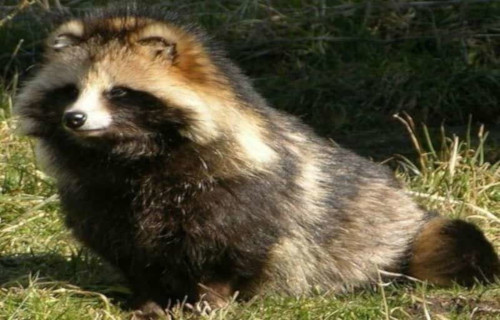
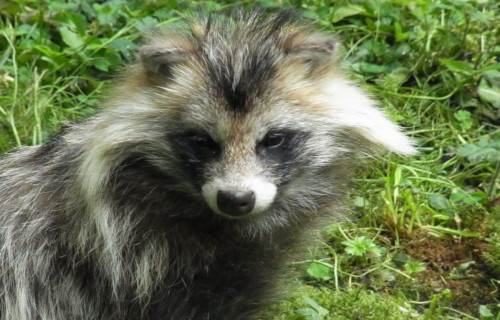
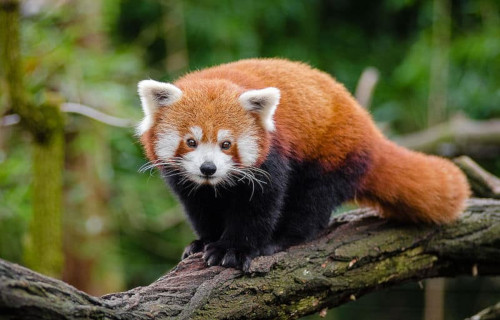
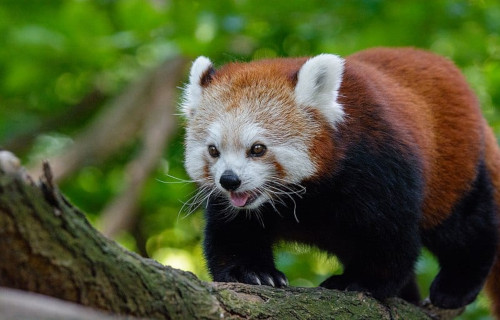
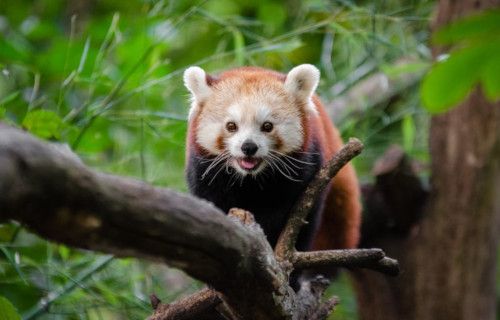
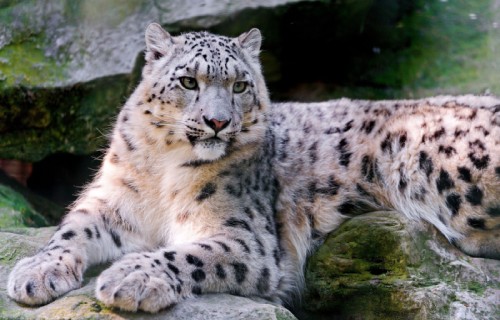
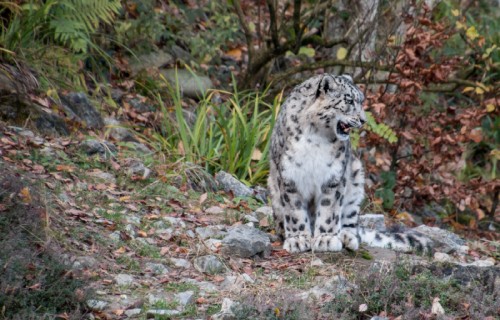

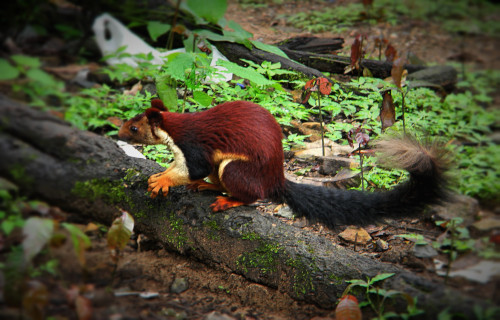
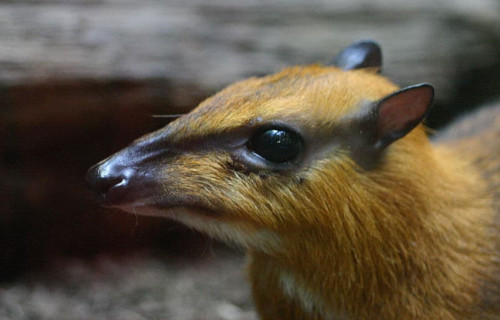
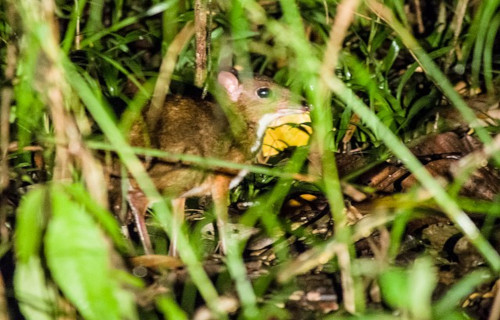
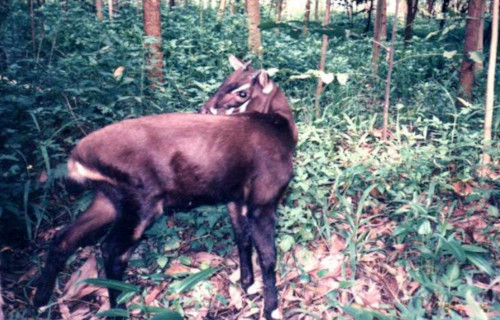
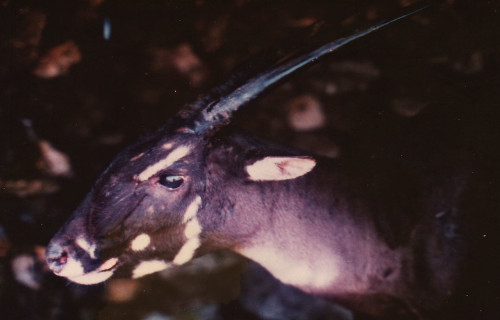
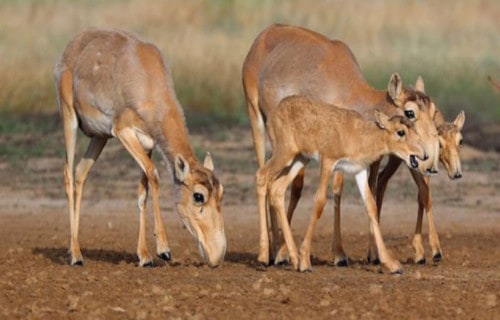
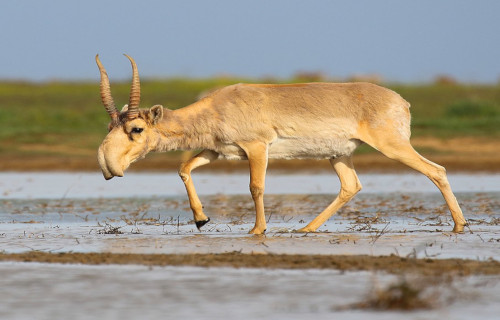
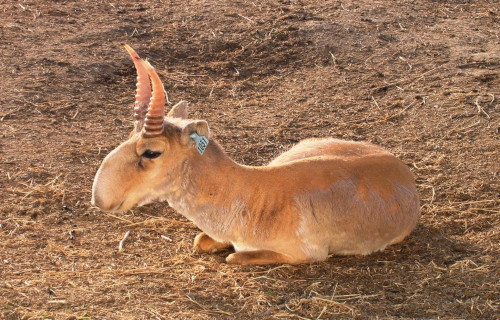
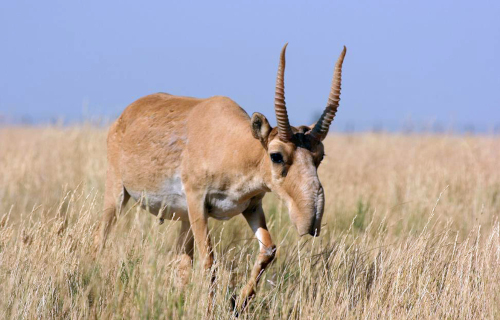









Leave a Reply